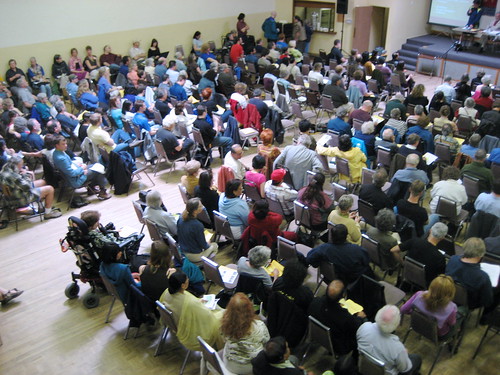I have recently been involved in the campaign for an independent COPE. There have been many arguments for a coalition with Vision Vancouver, but all of them boil down to a financial argument: if COPE separates from Vision, there will be no money from labour to run against Vision’s unlimited developer backing and strong foreign campaign donations. But honestly, do the members of Vancouver’s unions agree with the idea that their leadership will fund only Vision?
I have been asking everyone I talk to: do rank and file union members really agree with corporate tax cuts? Do members of CUPE 315, for example, agree with staff layoffs, P3’s and service cuts at a time of growing inequality? Do members of CUPE 378 agree with the three years of neoliberal reforms that have worsened the situation for everyone except the richest Vancouverites? Do the diverse members of the Vancouver District Labour Council really agree with the massive demolition and sell-off of social housing in our city? As poverty deepens, do rank and file union people agree with a developer-driven planning agenda that worsens the already-dire affordability crisis in Vancouver? Do they agree with closed shelters, and a homeless rate that increases year after year as people are pushed out the bottom in the world’s most unaffordable city?
No, they don’t agree. If there is a plan of action, union members and working people will break with conservative deals and go with what is possible: an independent COPE to win the November elections.
Above all, it is a strategic choice for COPE to reject a coalition with Vision. Currently it is COPE who is forced to argue that “if you can’t beat ’em join ’em.” This is the attitude that has allowed for a coalition despite the wide ideological gap between COPE and Vision. But if COPE takes a stand and refuses to go along with the game, it is Vision who is forced to adopt the survival attitude of joining opponents, and it is a much smaller ideological gap separating the opponent. Vote after vote, decision after decision, Vision and the NPA come together on the big issues, whether it’s corporate tax cuts, property upzoning, or the demolition of public housing.
Let’s face the voting record and compare the NPA term of 2005 – 2008 with the Vision term of 2008 – 2011. By every standard, Vision’s term has been a continuation of the NPA’s mandate, except that in many cases it has been worse. Take at least three areas that matter: taxes, housing, and public sector employment.



